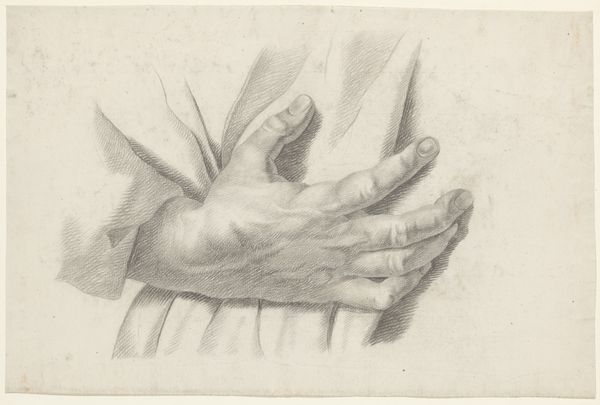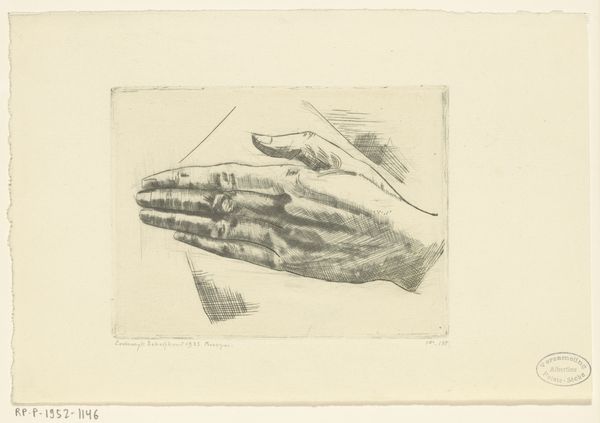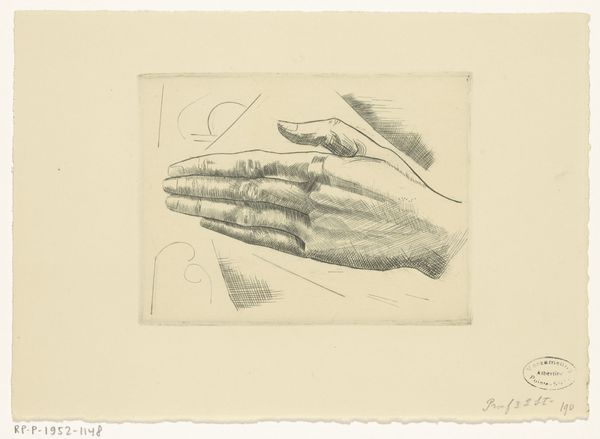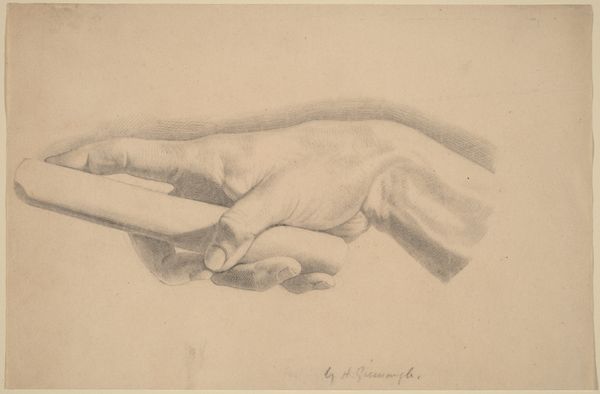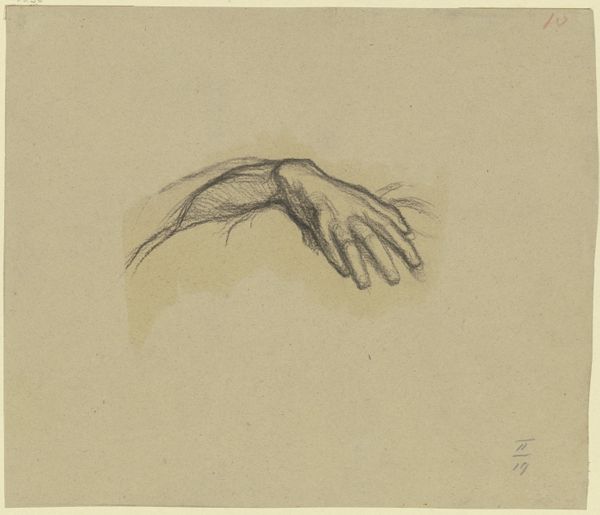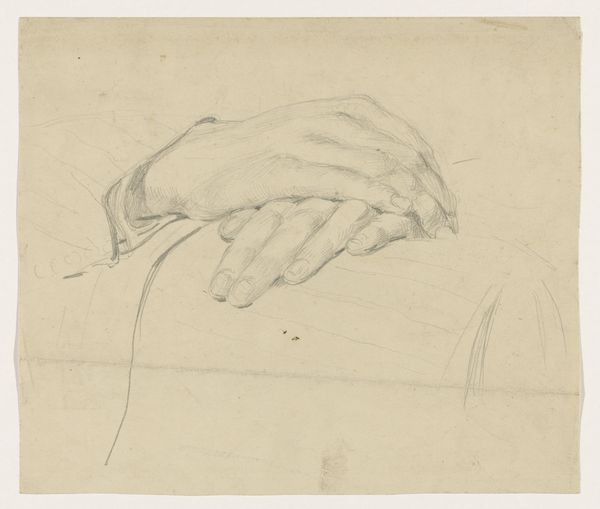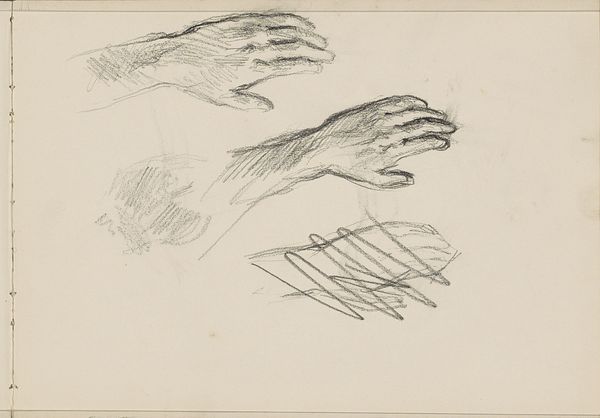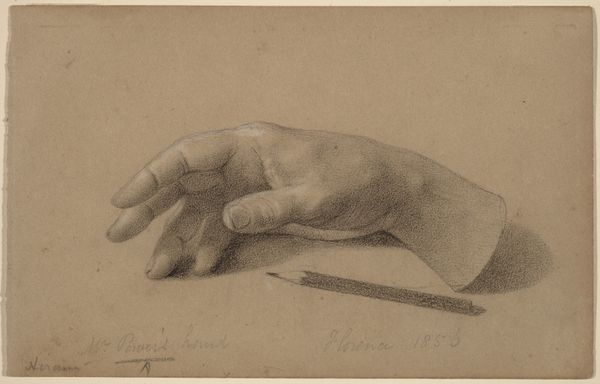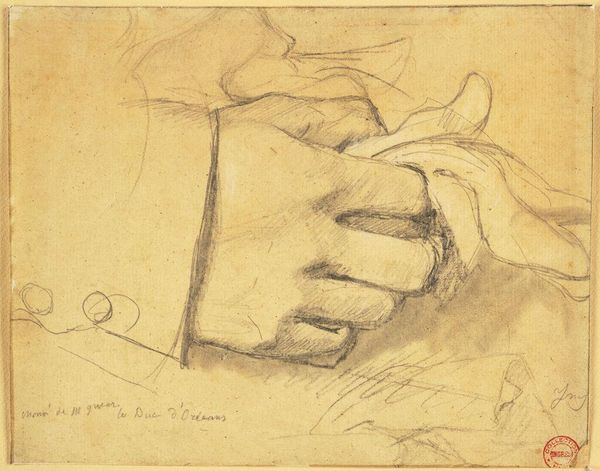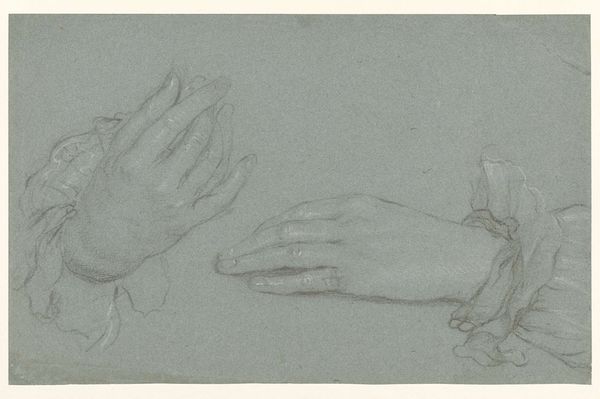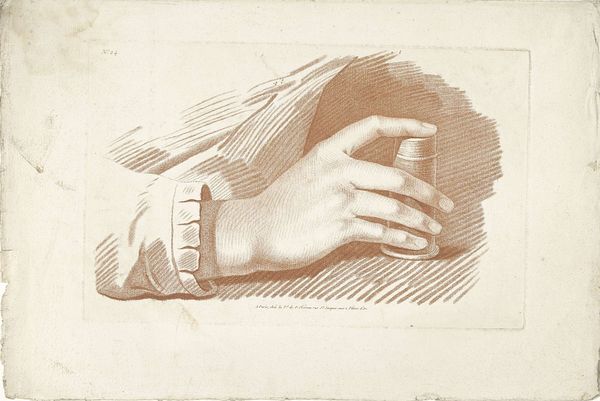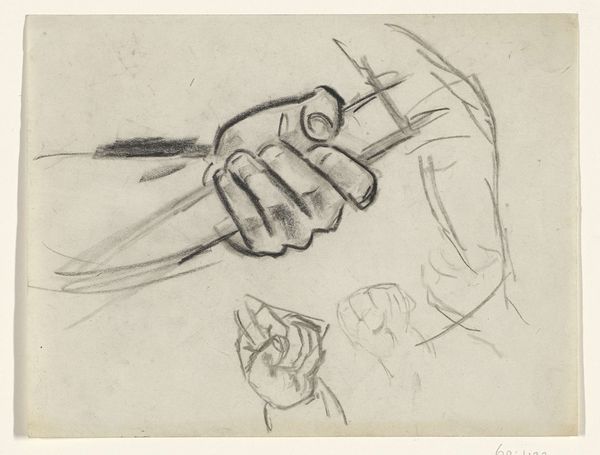
drawing, pencil
#
portrait
#
drawing
#
figuration
#
pencil drawing
#
pencil
#
academic-art
Dimensions: height 210 mm, width 288 mm
Copyright: Rijks Museum: Open Domain
Curator: Jean-François Janinet created this pencil drawing, "Titelprent met twee handen", sometime between 1773 and 1777. It resides here at the Rijksmuseum. Editor: My first impression is of something quite academic, a study. The use of red chalk gives it a warm, almost sanguine quality despite the stark realism. I find myself focused on the texture of the skin, the way light plays on the knuckles and tendons. Curator: The drawing reflects the principles of academic art, rooted in the intense study of human anatomy and form. It showcases a dedication to mastering fundamental techniques, indicative of its time. It serves as an excellent example of the period's obsession with precision and anatomical accuracy. We can consider how such skills were often gatekept, contributing to systemic issues within the art world of the time. Editor: Absolutely. The means of production here are simple: pencil, paper, a skilled hand. But the process is what intrigues me. How many hours did Janinet and, indeed, his model devote to this endeavor? This work almost acts as a blueprint for representing labour, even as it denies any social or political context. The viewer can grasp that creating this image meant not only working, but thinking carefully about artistic and cultural output. Curator: Considering the prevalence of similar studies at the time, "Titelprent met twee handen" becomes something of a self-referential commentary. The hand, as both the subject and the instrument of creation, takes on a powerful, almost symbolic weight. This raises compelling questions regarding identity, agency and the artist’s personal investment. Editor: Precisely! The focus isn’t solely on aesthetics, but on how images become crafted through materiality and labor. Look at the deliberate rendering; a deep understanding about the making of this art work can highlight social context that traditional approaches sometimes neglect. Curator: Examining art like this prompts important reflections on the role art and aesthetics has within society. Editor: Yes, art making relies on skill and the labour required is really a conversation on consumption and our view on labouring hands and their product.
Comments
No comments
Be the first to comment and join the conversation on the ultimate creative platform.
